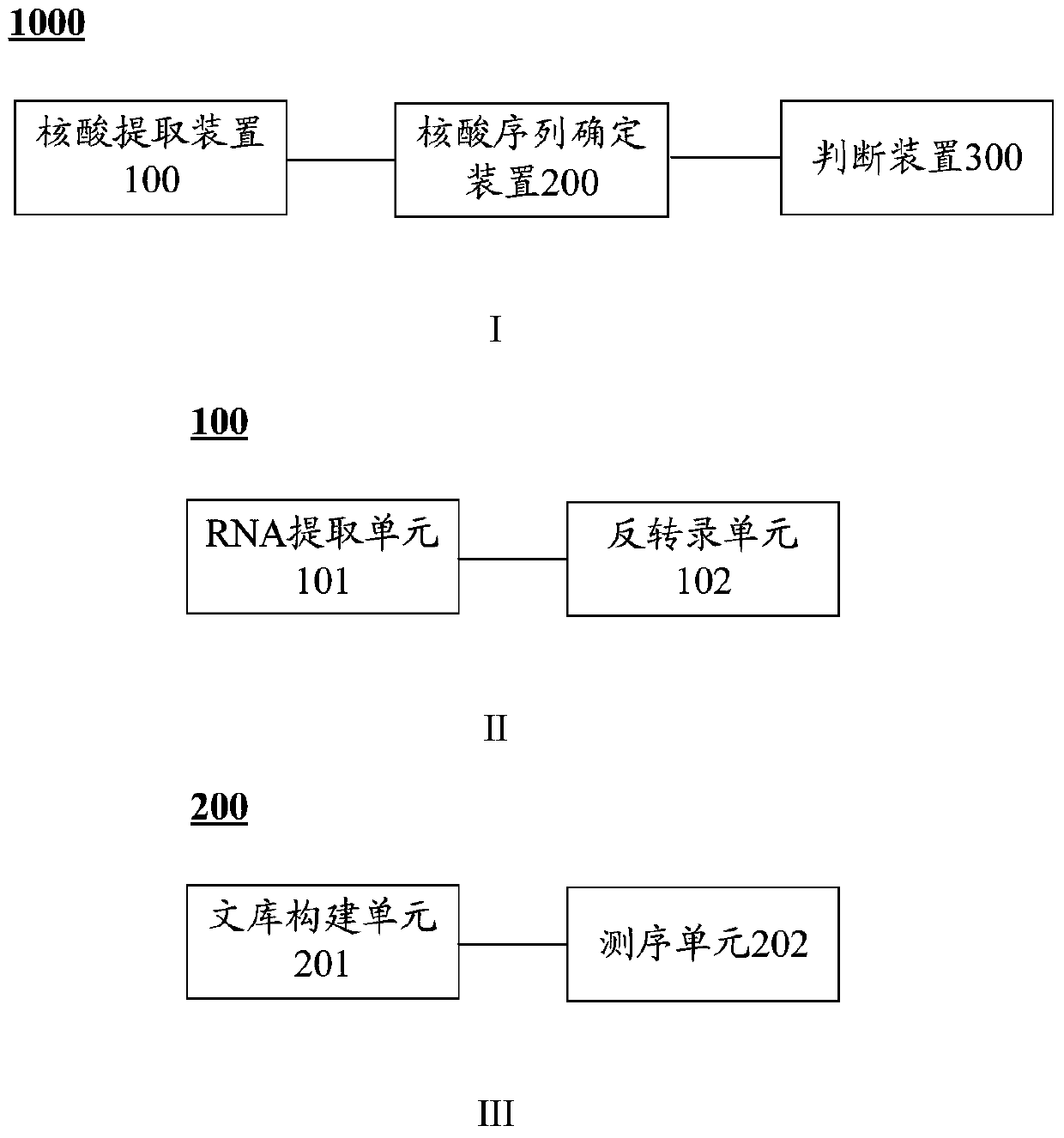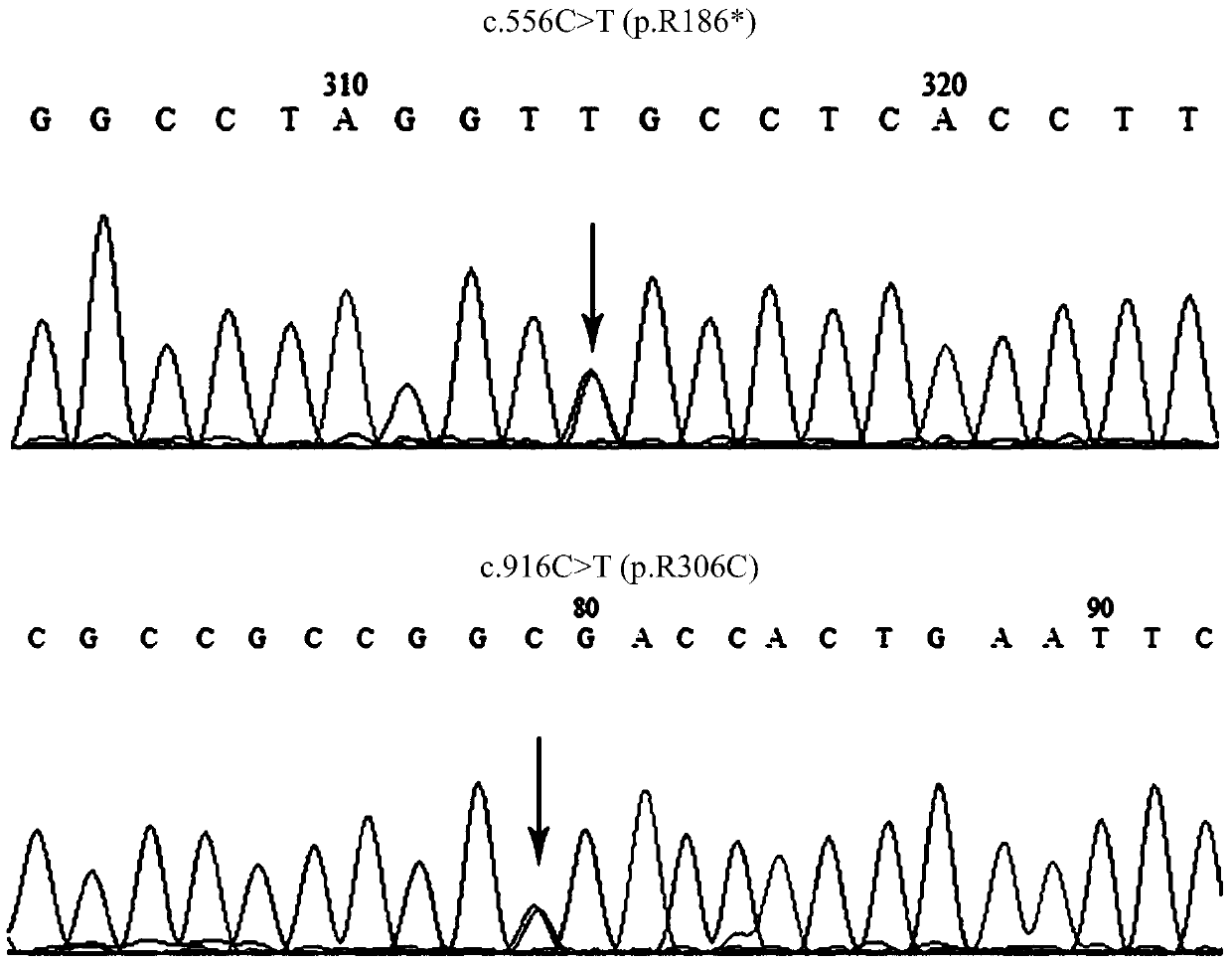bcs1l gene mutant and its application
A technology of mutants and uses, applied in the fields of application, genetic engineering, plant genetic improvement, etc., can solve the problem of unknown etiology of patients and needs to be further developed.
- Summary
- Abstract
- Description
- Claims
- Application Information
AI Technical Summary
Problems solved by technology
Method used
Image
Examples
Embodiment 1
[0061] Example 1 determines Syndrome Pathogenic Mutations
[0062] 1. Sample collection
[0063] The inventor collected a Chinese Han 2 generation Syndrome patient family, the family contains 4 members, including normal parents and a 17-year-old affected daughter (proband), a 12-year-old affected son. Both patients presented with hair loss and hearing loss.
[0064] The inventor collected peripheral blood samples of all members of the family, added EDTA for anticoagulation, and stored them at -80°C. All blood samples were signed informed consent, and were approved by the Ethics Committee of Peking University First Hospital.
[0065] 2. DNA extraction
[0066] The peripheral blood of all members of the above-mentioned family was taken, and the genomic DNA was extracted from the peripheral blood sample using the OMEGA Blood DNA Midi Kit Whole Blood DNA Extraction Kit, and the concentration and purity of the DNA were measured by a spectrophotometer, and the OD of each geno...
Embodiment 2
[0080] Example 2 Sanger method sequencing verification
[0081] Respectively to embodiment 1 described The BCS1L gene of all family members (including 2 patients and 2 normal family members) in the syndrome patient family and 300 randomly selected normal people outside the family were tested: c.556C>T and c. Primers were designed for the 916C>T mutation, and then the relevant sequence of the mutation site was obtained by PCR amplification, product purification and sequencing. According to the sequence determination results, whether it was mutant or wild type, the c.556C>T and c. 916C>T mutation and Correlation between syndromes.
[0082] The specific method steps are as follows:
[0083] 1. DNA extraction
[0084] According to the method for extracting DNA described in Example 1, the genomic DNA in the peripheral venous blood of the subject was extracted and prepared respectively for future use.
[0085] 2. Primer design and PCR reaction
[0086] First, refer to the hu...
Embodiment 3
[0098] Embodiment 3 detection kit
[0099] Prepare a detection kit, which includes primers capable of detecting the c.556C>T and c.916C>T mutations of the BCS1L gene, for screening susceptibility Syndrome biological samples, wherein these primers are BCS1L gene exon-specific primers, the sequences of which are shown in SEQ ID NO: 3-6 in Example 2.
[0100] Use the above kits to screen for susceptibility The specific steps of the biological sample of the syndrome are: extract the test subject's DNA according to the method described in step 2 of embodiment 1, and carry out PCR reaction (PCR) with the extracted DNA as template and the exon-specific primer of the above-mentioned BCS1L gene Refer to Example 2 for the reaction system and reaction conditions, and purify the PCR product according to conventional methods in the art, sequence the purified product, and then observe whether the sequence obtained by sequencing has both c.556C>T and c.916C> T mutation, which can effective...
PUM
 Login to View More
Login to View More Abstract
Description
Claims
Application Information
 Login to View More
Login to View More - R&D
- Intellectual Property
- Life Sciences
- Materials
- Tech Scout
- Unparalleled Data Quality
- Higher Quality Content
- 60% Fewer Hallucinations
Browse by: Latest US Patents, China's latest patents, Technical Efficacy Thesaurus, Application Domain, Technology Topic, Popular Technical Reports.
© 2025 PatSnap. All rights reserved.Legal|Privacy policy|Modern Slavery Act Transparency Statement|Sitemap|About US| Contact US: help@patsnap.com



